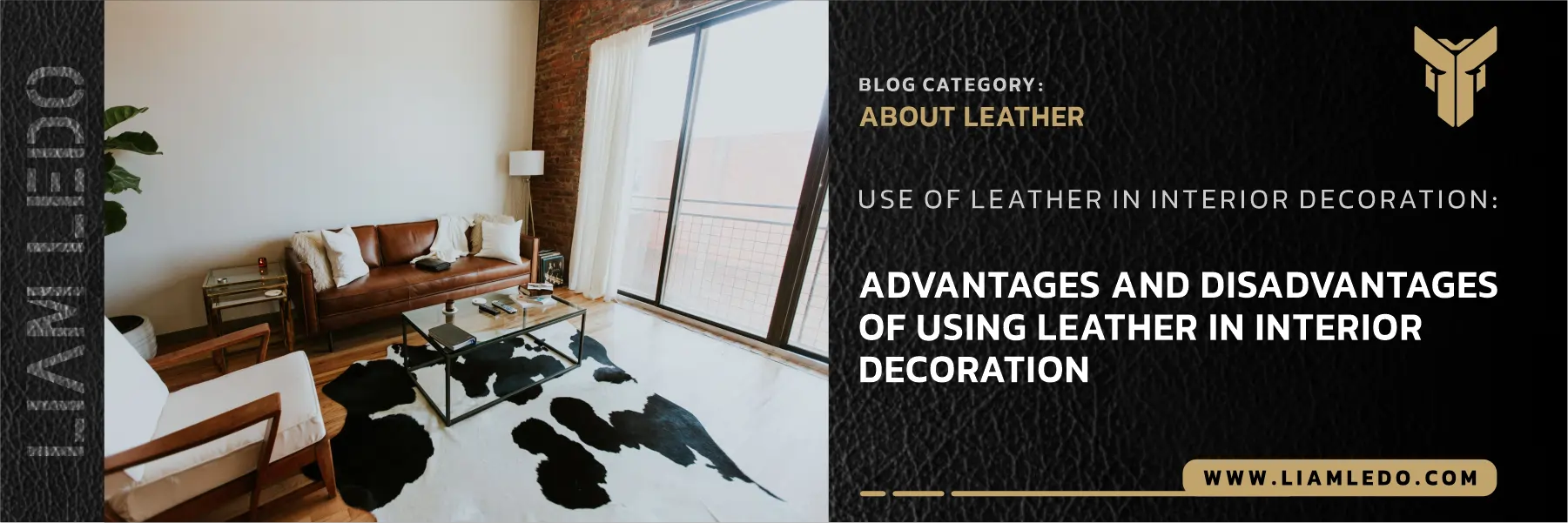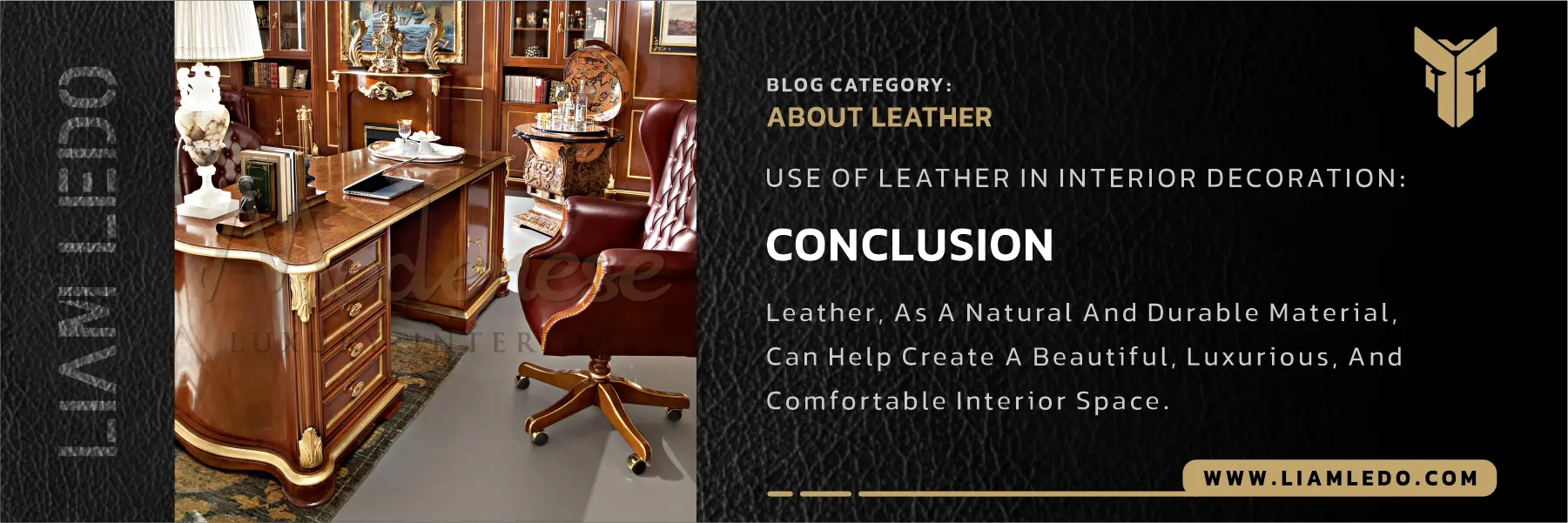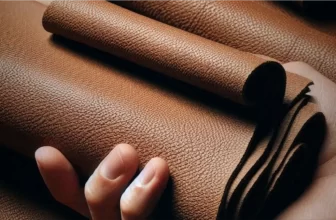
Leather, as a natural, durable, and beautiful material, is widely used in interior decoration. Its unique characteristics, including softness, strength, and natural beauty, have made it a favorite in interior design. This article explores various applications of leather in interior decoration, its advantages and disadvantages, and essential tips for proper use.
1. Characteristics of Leather and Its Impact on Interior Decoration:
Leather, due to its unique features, is one of the most popular choices in interior design:
- Natural Beauty: Leather has a distinctive and classic appearance that adds authenticity and beauty to any space. Its natural texture and color variations give depth and character to any environment.
- Durability and Strength: Leather is one of the most resistant materials to wear, tear, and other damages. Its high durability makes it suitable for high-traffic and frequently used areas such as furniture and flooring.
- Comfort and Softness: Leather’s softness and suppleness contribute to a sense of comfort and luxury in any space. This feature is particularly evident in furniture and bedding.
- Breathability: Leather allows air to pass through, preventing heat buildup or sweating when in contact with the skin.
2. Applications of Leather in Interior Decoration:
Leather is used in various aspects of interior decoration, each application having its own features and advantages:
- Furniture: One of the most common uses of leather in interior decoration is in furniture upholstery. Leather sofas, chairs, and couches are popular choices due to their elegant appearance and durability. In addition to enhancing the beauty of furniture, leather adds comfort and extends its lifespan, easily blending with other materials and colors.
- Flooring: Using leather as flooring in interior spaces, particularly in living rooms and offices, helps create a warm and inviting environment. Leather flooring, with its soft and insulating properties, provides a comfortable and warm feel to the interior space.
- Curtains and Wall Coverings: Leather can also be used as wall coverings or curtains, adding depth and texture to interior design. Leather curtains not only enhance beauty but also provide sound and thermal insulation, making them suitable for spaces aiming for a modern and stylish design.
- Accessories: Leather is also used as a decorative element in accessories like cushions, poufs, and table covers. These accessories can easily change the style and appearance of a space.
- Ceilings and Wall Panels: Leather used as wall or ceiling panels can give a unique and distinct look to interior design. These panels are particularly suitable for spaces that require sound insulation and aesthetic appeal.

3. Advantages and Disadvantages of Using Leather in Interior Decoration:
Every material has its own set of advantages and disadvantages, and leather is no exception. This section will examine the pros and cons of using leather in interior decoration:
Advantages:
- Durability and Longevity: Leather’s high resistance to wear and tear gives it a long lifespan, maintaining its beauty and quality over time.
- Beauty and Elegance: Leather imparts a luxurious and sophisticated look to any space and can easily blend with other materials and colors.
- Comfort: The softness and suppleness of leather make it a very comfortable and pleasant option for furniture and bedding.
- Breathability: Leather’s ability to allow air to pass through ensures comfort during use and prevents sweating.
Disadvantages:
- High Cost: One of the major drawbacks of leather is its high cost. Leather products are typically more expensive due to the production process and high quality.
- Sensitivity to Moisture: Leather is sensitive to moisture, and contact with water or humidity can cause stains, cracking, or decay.
- Special Maintenance: Leather requires specific care and maintenance. Regular cleaning and protection are necessary to prevent damage from prolonged use.
4. Important Tips for Using Leather in Interior Decoration:
To effectively use leather in interior decoration, the following tips can help:
- Choose the Right Color: The color of the leather can significantly impact the interior space. Choosing darker colors for larger spaces and lighter colors for smaller spaces can help create balance and beauty.
- Combine with Other Materials: Leather blends well with other materials like wood, metal, and soft fabrics. Using leather alongside these materials can create contrast and visual appeal.
- Care and Maintenance: To preserve the beauty and durability of leather, proper care and maintenance are crucial. Using protective covers, waxes, and leather-specific cleaners can help maintain its quality and longevity.
- Match with Design Style: Leather harmonizes well with various interior design styles, including classic, modern, and industrial. Choosing leather that matches the design style of the interior space can create greater harmony and beauty.
5. The Process of Choosing Leather for Interior Decoration:
When choosing the right leather for interior decoration, factors like type, color, and texture are crucial:
- Type of Leather: Various types of leather, including cowhide, goatskin, and sheepskin, have their own unique characteristics. Choosing the type of leather based on its intended use in the decoration can significantly affect the final result.
- Color and Texture: Selecting the right color and texture for the leather, based on the interior design and personal preference, is important. Darker colors add depth and warmth to the interior, while lighter colors can contribute to brightness and openness.
- Quality: The quality of the leather greatly influences its lifespan and appearance. Choosing high-quality leather helps preserve its beauty and durability over time.

Conclusion:
Leather, as a natural and durable material, can help create a beautiful, luxurious, and comfortable interior space. By using leather correctly and paying attention to important points in selection, maintenance, and application, you can take full advantage of the beauty and durability of this material. Due to its unique characteristics, leather can add character and authenticity to any space and is a suitable choice for interior design, considering various needs and preferences.







